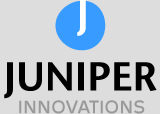The concept of “Plan Slow, Act Fast” in *How Big Things Get Done* emphasises the importance of meticulous planning before jumping into execution. It challenges the common tendency to rush into action, often leading to cost overruns, delays, and failures in large projects.
Read the rest of this entry »Juniper Innovations' blog
Mastering Resource Allocation Across Hundreds of Complex Projects
August 14th, 2024In the fast-paced world of project management, juggling resources across hundreds of complex projects can feel like conducting an orchestra with a hundred instruments—simultaneously. Getting the right people, tools, and time allocated where they’re needed most is both an art and a science. Let’s first break down some basic ideas on how to do it effectively, without losing your mind (or your team). Then we’ll cover more ideas on identifying and managing the risks associated with centralised resource management before finishing off with ideas to manage some business scenarios around centralised control and key project resources who also support operational needs. So first to some basic concepts and ideas on resource allocation…
Read the rest of this entry »Ideas to build trust with programme stakeholders
August 13th, 2024Trust is the cornerstone of any successful programme, especially when dealing with stakeholders who play a crucial role in the decision-making and overall success of a project. As a project or transformation leader, establishing and maintaining trust with these stakeholders is essential for ensuring smooth communication, collaboration, and the achievement of goals. Here’s some ideas and a checklist on how to build and nurture trust with programme stakeholders.
Read the rest of this entry »Is the use of digital twins to improve sustainability on the rise?
June 25th, 2024Digital twins, which are virtual replicas of physical objects or processes, are becoming increasingly valuable tools for supply chain management and optimisation, including sustainability.
A sustainability trend in supply chains is driven by several factors:
Read the rest of this entry »Why do large government IT programmes fail?
June 14th, 2024When big IT programmes in government fail it’s often due to a combination of interrelated factors. They contribute to a complex environment that hinders success. Some of the primary reasons for such failures are below, some of which are unique only to the public sector:
Read the rest of this entry »7 reasons why your organisation struggles to create a generative culture
June 10th, 2024A generative culture within an organisational is characterised by high levels of innovation, learning, and adaptability. It is marked by openness, collaboration, and a focus on continuous improvement. In such a culture, employees are able to more freely take initiative, share ideas, and experiment without fear of failure. The Westrum model generative model is discussed in this paper >>
They can fail or struggle to have an impact in an organisation for a variety of reasons.
Read the rest of this entry »10 reasons why organisations use IT architecture methods and models
June 6th, 2024Organisations use IT architecture methods and models to ensure that their IT infrastructure and systems are well-designed, efficient and well-aligned with their business goals and objectives. Here are some key situations where IT architecture is particularly valuable:
Read the rest of this entry »The importance of slow thinking in organisational environments
May 8th, 2024Popularised by Nobel laureate Daniel Kahneman in his book “Thinking, Fast and Slow,” Kahneman describes two systems that drive our decision-making:
Read the rest of this entry »Is there too much or too little technology in the workplace?
September 20th, 2013 Look at the buzzwords in technology and businesses today. From BYOD to portable data capture, Hyper-V to water cooled graphics cards, ERP to LMS there is no doubt about it, the amount of technology in business is growing at a fast pace. But a constant debate we’ve had over the last decade is do businesses have too much or too little technology? Read the rest of this entry »
Look at the buzzwords in technology and businesses today. From BYOD to portable data capture, Hyper-V to water cooled graphics cards, ERP to LMS there is no doubt about it, the amount of technology in business is growing at a fast pace. But a constant debate we’ve had over the last decade is do businesses have too much or too little technology? Read the rest of this entry »



